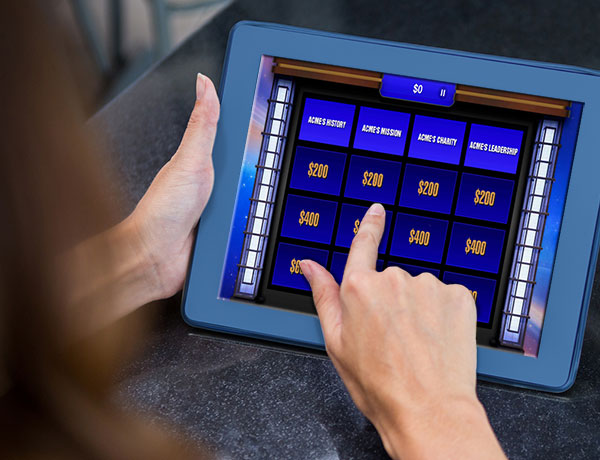
Published on
The health care industry is made up of highly skilled, highly schooled, high-cost, in-demand professionals who are responsible for making life-and-death decisions. Consequently, their training is best in class and can serve as a model for all other industries.
Ever since Dr. James Rosser Jr. used a PlayStation to improve his surgical accuracy, the idea of games to improve clinical interventions has been of great interest to the industry. Over the past decade, health care professionals have adopted game-based learning in volume, resulting in improved training and compliance rates, boosted patient care, and time and cost savings for clinical practices.
While there are many reasons game-based training is effective, the four below demonstrate how this solution stands apart from traditional training in all types of work environments, and why leaders everywhere should follow the health care industry’s lead.
Games Tell A Story
Learners connect with and recall content when it is presented as a story. The presentation of the story helps learners to visualize themselves in the same situation. Research has found that simulation-based training, which requires learners to practice doing, can have a significant positive impact on training outcomes.
Clinicians around the world use scenario-based training games to improve their delivery of patient care. For the American College of Chest Physicians and my firm created CHEST, a story-based training course for physicians delivering COPD care. Learners go through each patient story with a series of multiple-choice answers to build the story. When the wrong answer is chosen, helpful explanations reveal the correct answer.
Games Can Tap Into Our Natures
People are competitive. Turning content into a mental gymnasium with challenges, power-ups and rewards can draw them in and keep them with the material for longer, increasing their ability to absorb and retain the information. The often-competitive and extroverted nature of sales teams, for example, makes them ideal students for game-based learning training courses with gamification elements added.
While the CHEST scenario training game focused on interaction for personal improvement, sales reps respond well to games that make use of their new knowledge to gain points or rewards. For example, Bayer Pharmaceuticals developed Rep Race, a simulation game meant to educate and excite sales reps. According to Bayer, reps can play virtually unlimitedly, and the company has seen positive results.
Games Make Training More Available
Sometimes the best training games are fun and fast, helping learners digest your message and improve prescribed skills. Professionals in all areas face ever-increasing time pressures. Breaking up their training content into bite-sized game-based experiences that they can access between tasks can help keep their attention and result in better learning.
This time crunch is especially evident in health care. Southern NHS Foundation in the U.K. recently used a new e-learning system with bite-sized game scenarios focused on topics including health and safety, infection prevention control, safeguarding and the Mental Health Act. The game element enabled regular versus occasional training, saved millions in time and training costs and significantly increased staff compliance and standards of care at the same time.
Beautiful Games Engage The Learner
Eye candy is important because more often than not, people do judge books by their covers. It takes all but a second for people to form an opinion (positive or negative) about anything they see based on visual design. Appealing art direction and efficient user experience design are not easy to get right, but they are critical when trying to engage and retain learners. After all, if graphics weren’t important, we would all still be playing Atari 2600 games and watching VHS tapes. The better the art, the more a player (or in the case of game-based training, a learner) will focus on the content. And the more they focus on the content, the more they will retain.
In 2016, Alzheimer’s Research U.K. released Sea Hero Quest on mobile in an effort to gather data to better understand, diagnose and detect the early onset of dementia for years to come. This cheerful, colorful, cartoony game includes several bite-sized levels designed to test memory and spatial awareness. As the player captains their little boat along snaking channels towards checkpoints, the game records their every move.
Game-Based Learning Is Driving Success
Game-based training improves employee performance, professional interactions and patient adherence. It engages the emotional part of the brain and provides players with a safe environment to practice, fail, achieve and change behavior, leading to more engagement and better outcomes. As more industries experiment with game-based training, inevitably they will experience the success that the health care industry is seeing.


